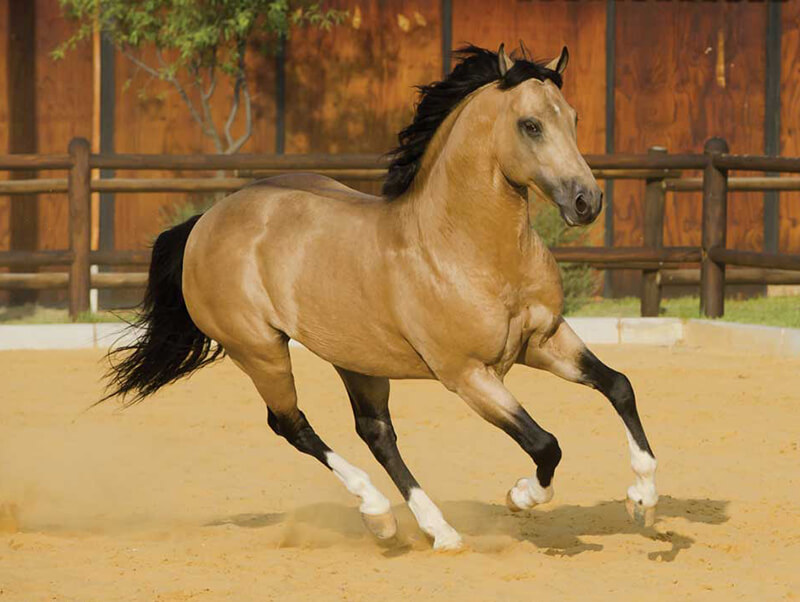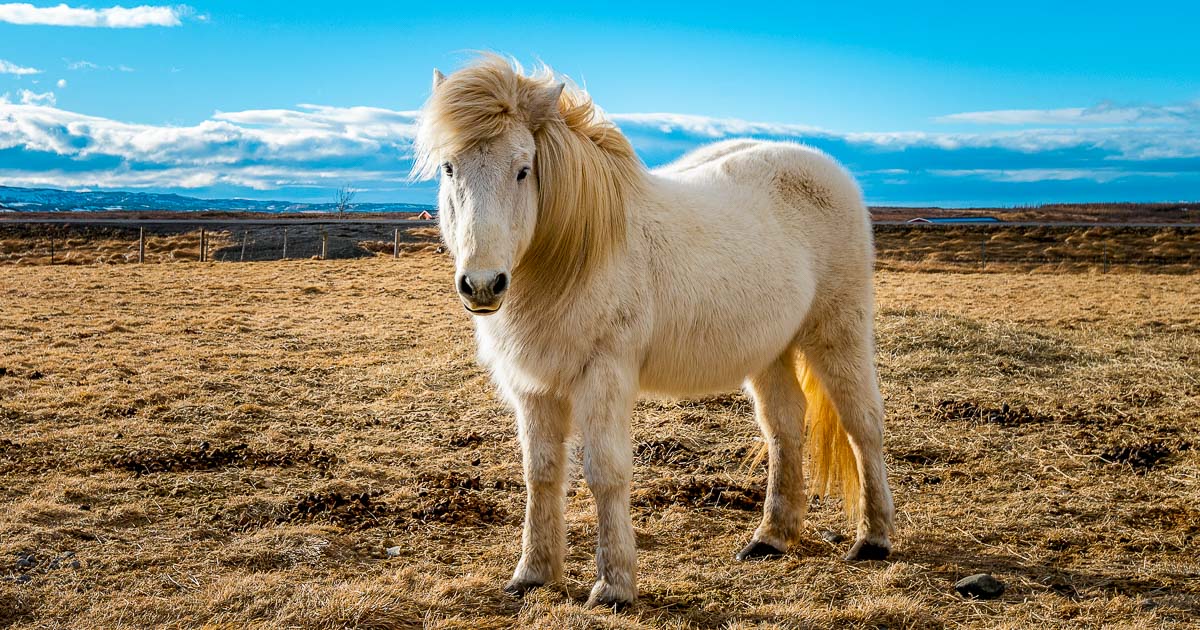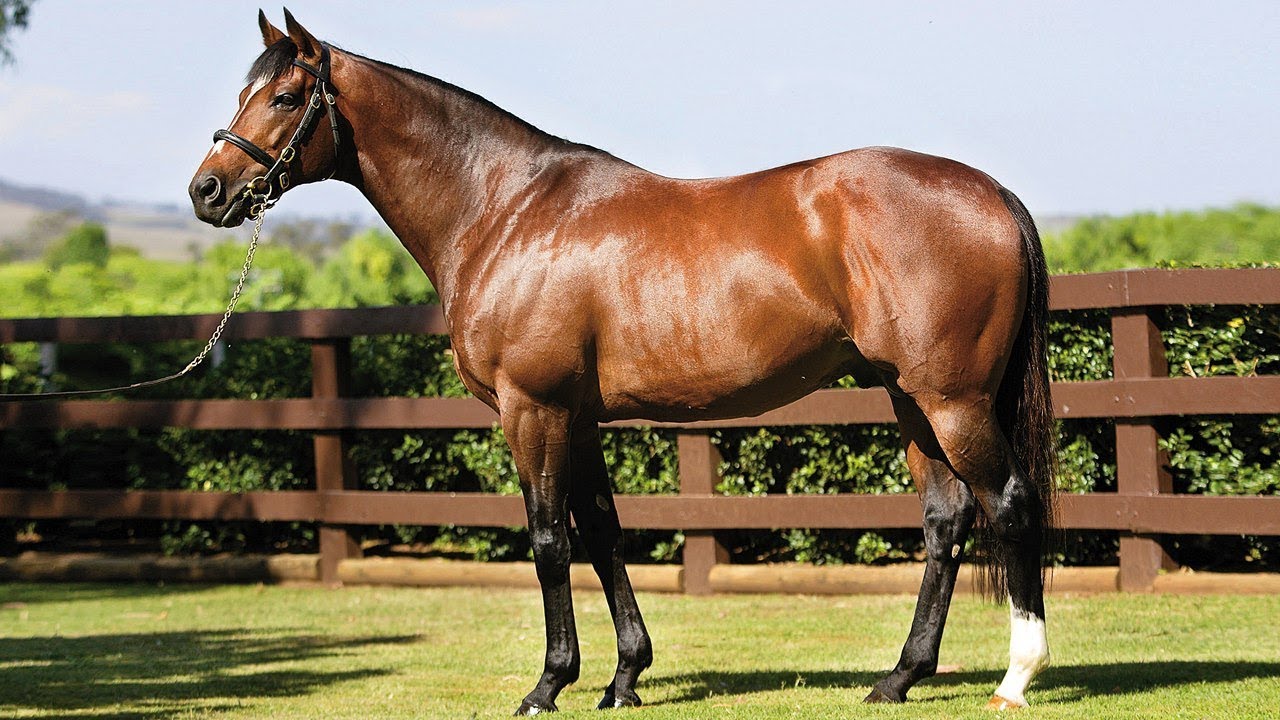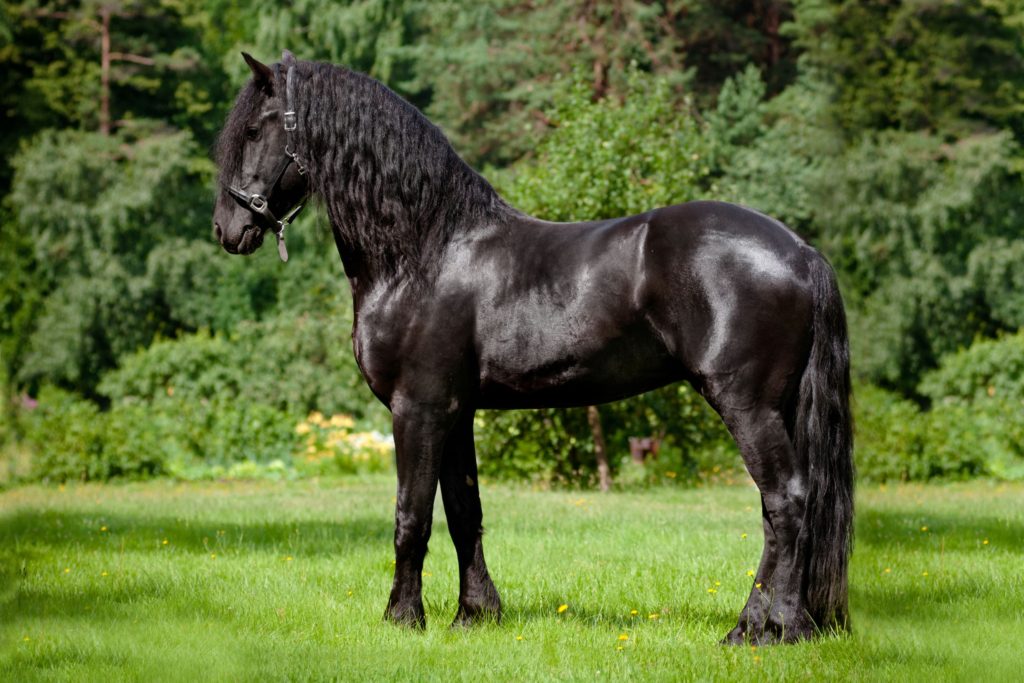"Exploring the Top 10 Horse Breeds Worldwide"
Embarking on a journey through the equestrian world unveils a tapestry of beauty, strength, and unique characteristics exhibited by various horse breeds across the globe. The top 10 horse breeds stand as paragons of equine excellence, each with its distinct qualities and historical significance. The majestic Arabian horse, renowned for its endurance and grace, holds a hallowed place in the equestrian realm. The powerful and versatile American Quarter Horse, celebrated for its speed and agility, commands attention on both racing tracks and ranches. In Europe, the elegant and refined Hanoverian horse stands out for its athleticism, making it a favorite in dressage and show jumping circles. From the rugged landscapes of Iceland comes the robust Icelandic horse, known for its distinctive gait and hardy nature. The Clydesdale, a gentle giant from Scotland, captivates with its massive build and feathered feet. Other notable breeds such as the Thoroughbred, Andalusian, Friesian, Appaloosa, and Paint Horse round out this global showcase of equine diversity, each breed contributing its unique charm to the rich tapestry of the horse world.
1. Arabian Horse
The Arabian horse is a distinct and ancient breed known for its elegance, stamina, and intelligence. Originating from the Arabian Peninsula, it is one of the oldest horse breeds in the world, with a history that dates back thousands of years. Renowned for its distinctive head shape, high tail carriage, and finely chiseled features, the Arabian horse is easily recognizable.
Arabians are medium-sized horses with a compact, muscular build and a refined bone structure. They typically stand between 14.1 to 15.1 hands high. One of the notable characteristics of this breed is their arched neck, which adds to their overall grace and presence. Arabian horses have a short back and a strong, well-angled croup, contributing to their agility and endurance.
Known for their friendly and cooperative nature, Arabians are often chosen for various equestrian disciplines, including endurance riding, dressage, and horse shows. Their impressive stamina allows them to excel in long-distance races, and their intelligence makes them trainable and versatile.
The Arabian breed has had a significant impact on the development of many other horse breeds worldwide, contributing its distinctive traits to enhance the qualities of various equine populations. The breed's enduring legacy and enduring popularity speak to the timeless appeal of the Arabian horse in the equestrian world.
2. American Quarter Horse
The American Quarter Horse, renowned for its speed and versatility, is a distinct breed with a rich history deeply rooted in the United States. Originating in the 17th century, these horses earned their name for their incredible prowess in quarter-mile sprints. Known for their compact and muscular build, Quarter Horses typically stand between 14 to 16 hands high, with a strong, well-defined hindquarters and a broad chest.
Renowned for their agility and athleticism, Quarter Horses have excelled in various equestrian disciplines, including barrel racing, cutting, and rodeo events. They are celebrated for their quick acceleration and ability to make sharp turns, making them prized in Western riding competitions.
Characterized by a refined head and expressive eyes, the American Quarter Horse exhibits a wide range of coat colors and patterns. Their temperament is often described as friendly and cooperative, contributing to their popularity as both working horses and beloved companions.
Over the years, the breed has become synonymous with American horsemanship and is widely used in ranch work due to its intelligence and versatility. The American Quarter Horse Association (AQHA) was established in 1940 to promote and preserve the breed's heritage, ensuring its enduring legacy in the world of equine sports and activities.
3. Hanoverian Horse
The Hanoverian horse, hailing from the Lower Saxony region of Germany, is a warmblood breed known for its exceptional athleticism, versatility, and graceful appearance. Developed over centuries, the breed has evolved to become one of the most prominent sport horses globally. Hanoverians are recognized for their well-proportioned build, elegant movement, and a refined head with expressive eyes.
The Hanoverian studbook, established in 1888, meticulously maintains breed standards, focusing on producing horses with excellent conformation, powerful hindquarters, and a cooperative disposition. This selective breeding has led to the development of a horse that excels in both the competitive arena and as a dependable riding partner.
Hanoverians often showcase expressive gaits, particularly in dressage, contributing to their success in international competitions. Their adaptability and amiable nature make them sought-after not only in the world of competitive sports but also as pleasure horses and companions. The Hanoverian breed's commitment to excellence continues to solidify its standing as a premier choice in the equestrian community.
Typically standing between 15.3 to 17.2 hands high, Hanoverians are prized for their strength and athleticism, making them well-suited for various equestrian disciplines, including dressage, show jumping, and eventing. The breed's versatile nature is further enhanced by its intelligent and trainable temperament, making them popular choices for riders of all skill levels.
4.horse Icelandic
The Icelandic horse, renowned for its robust nature and unique characteristics, is a breed native to Iceland. Brought to the island by Norse settlers in the 9th and 10th centuries, the breed has thrived in the challenging Icelandic environment, resulting in a hardy and sure-footed horse. Known for their strength, agility, and endurance, Icelandic horses are medium-sized, typically standing between 13 to 14.2 hands high.
One distinctive feature of the breed is its ability to perform five natural gaits, including the tolt, a smooth and ground-covering four-beat gait that provides a comfortable and steady ride. This makes the Icelandic horse well-suited for long journeys and challenging terrains.
Icelandic horses come in various coat colors and patterns, and their thick double coat allows them to withstand harsh weather conditions. Their thick manes and tails further contribute to their distinctive appearance. Despite their smaller stature, Icelandic horses are known for their strength and resilience, making them suitable for various activities, including trail riding, endurance riding, and even competitions.
Due to strict regulations in Iceland, once an Icelandic horse leaves the country, it is not allowed to return. This measure has helped maintain the purity of the breed, ensuring that the Icelandic horse remains a unique and cherished part of the country's cultural heritage.
5. Clydesdale Horse
The Clydesdale, originating from Scotland, is a majestic draft horse breed known for its impressive size, strength, and distinctive appearance. Developed in the Lanarkshire district along the River Clyde during the 18th century, Clydesdales have become synonymous with power and elegance. Typically standing between 16 to 18 hands high, Clydesdales are characterized by their muscular build, broad chest, and feathering on their lower legs, which adds to their regal appearance.
Renowned for their docile temperament, Clydesdales are often favored as gentle giants despite their substantial size. They showcase a characteristic high-stepping action and have a broad, expressive face with a distinctive profile.
Traditionally employed in heavy draft work on farms, Clydesdales played a crucial role in agriculture and transportation. However, as technology advanced, their numbers dwindled, and their purpose shifted towards activities such as parades, shows, and promotional events. The breed gained global recognition through its association with prominent beer companies, featuring in iconic advertisements.
Clydesdales are known for their versatility and adaptability, making them suitable not only for agricultural tasks but also for various equine activities, including driving competitions and pleasure riding. Dedicated breed societies, like the Clydesdale Horse Society, work to preserve and promote the breed, ensuring that these magnificent horses continue to be appreciated for their strength and gentle disposition.
6. Thoroughbred Horse
The Thoroughbred, originating in 17th-century England, is a remarkable horse breed renowned for its speed, agility, and competitive spirit. Bred for horse racing, the Thoroughbred has become synonymous with the sport due to its exceptional athleticism and stamina. Typically standing between 15.2 to 17 hands high, these horses have a sleek and slender build, characterized by a long neck, deep chest, and powerful hindquarters.
Thoroughbreds are known for their fine, expressive heads, large eyes, and finely chiseled features. The breed's coat colors can vary widely, with bay, chestnut, and gray being common. Thoroughbreds are celebrated for their high energy, intelligence, and spirited nature, traits that make them well-suited for racing and other equestrian disciplines.
The breed's legacy extends beyond the racetrack, as Thoroughbreds often excel in show jumping, dressage, and eventing. Their versatility has led to their integration into various equestrian sports and activities worldwide.
Thoroughbred pedigrees are meticulously documented, and the breed's bloodlines are closely monitored. The breed's exceptional speed and endurance are attributed to selective breeding practices that have been refined over centuries. The influential role of Thoroughbreds in shaping modern horse racing and their contribution to the development of many other horse breeds highlight their enduring impact on the equine world.
7. Andalusian Horse
The Andalusian, originating from the Iberian Peninsula in Spain, is a distinguished horse breed recognized for its grace, intelligence, and versatility. With a history dating back to the 15th century, Andalusians were highly prized as warhorses and favored by royalty for their elegance. Standing between 15 to 16.2 hands high, these horses are known for their strong, compact build, arched neck, and expressive eyes.
Andalusians are celebrated for their smooth, elevated movements, particularly in the traditional dressage movements known as the "airs above the ground." They possess a distinctively long, flowing mane and tail, often seen in various coat colors such as gray, bay, and black.
Known for their gentle temperament and quick learning ability, Andalusians are versatile and excel in various disciplines, including dressage, show jumping, and driving. Their cooperative nature makes them suitable for both experienced riders and those new to horseback riding.
The breed's significance in Spanish culture is evident in their representation in art, including classical paintings and bullfighting traditions. Today, organizations such as the Pure Spanish Horse (PRE) studbook work to preserve and promote the Andalusian breed, ensuring its continued appreciation for its beauty, athleticism, and historical importance.
8. Friesian Horse
The Friesian, originating from the Friesland region of the Netherlands, is a majestic horse breed renowned for its striking appearance, strength, and versatility. With a history dating back to the Middle Ages, Friesians were initially warhorses in medieval Europe but later gained popularity for their use in agriculture and carriage driving. Today, they are admired for their grace and versatility in various equestrian disciplines.
Friesians are known for their powerful and compact build, standing between 15 to 17 hands high. They have a distinctive appearance with a well-arched neck, a high-stepping trot, and a luxurious mane and tail. The breed is predominantly black, although chestnut Friesians do exist.
Recognized for their friendly and cooperative temperament, Friesians are suitable for various activities, including dressage, driving, and pleasure riding. Their striking presence and remarkable movement often make them a preferred choice in the show ring.
Friesian horse associations, such as the Friesian Horse Association of North America (FHANA), work to preserve and promote the breed's standards. Through selective breeding, the Friesian's unique characteristics, including its distinctive trot and abundant feathering on the lower legs, continue to be maintained, ensuring the breed's enduring popularity and appreciation worldwide.
9. Appaloosa Horse
The Appaloosa, originating from the Nez Perce tribe in the American Northwest, is a distinctive horse breed celebrated for its striking coat patterns, versatility, and endurance. With a history intertwined with Native American culture, the Appaloosa played a crucial role as a warhorse and in various tribal ceremonies. Standing between 14.2 to 16 hands high, Appaloosas are recognized for their strong build, refined head, and unique spotted coat patterns, often including the iconic "leopard" spots.
Appaloosas exhibit a variety of coat patterns, such as blanket, snowflake, and marble, with a base coat color that can range from bay and chestnut to black. Their distinctive features also include striped hooves, mottled skin, and a white sclera around their eyes.
Known for their versatility, Appaloosas excel in numerous disciplines, including Western riding, racing, dressage, and trail riding. They are prized for their intelligence, agility, and friendly disposition, making them suitable for riders of various skill levels.
Appaloosa Horse Club (ApHC), established in 1938, serves as the breed registry, preserving the Appaloosa's unique characteristics and promoting its diverse talents. This breed's rich history, striking appearance, and adaptability contribute to its continued popularity in the equestrian world.
10. Paint Horse
The Paint Horse, distinguished by its vibrant coat patterns and versatile abilities, is a breed known for its distinctive appearance and athletic prowess. Originating in the United States, Paint Horses share ancestry with the American Quarter Horse and are recognized for their unique coat colorations, including overo, tobiano, and tovero patterns. Standing between 14 to 16 hands high, these horses have a well-muscled build, compact frame, and a refined head.
The Paint Horse's coat patterns vary widely, featuring splashes of white and contrasting colors, often with a base of solid colors like black, bay, chestnut, or sorrel. Their striking markings make them popular in the show ring and among pleasure riders.
Renowned for their versatility, Paint Horses excel in various disciplines, including Western pleasure, reining, cutting, and trail riding. Their calm temperament, intelligence, and willingness to work contribute to their popularity among riders of different skill levels.
The American Paint Horse Association (APHA) serves as the breed registry, meticulously documenting bloodlines and ensuring the preservation of the Paint Horse's distinctive characteristics. With a rich history and a range of abilities, Paint Horses continue to captivate enthusiasts with their eye-catching appearance and versatility in the diverse world of equestrian sports and activities.









:strip_icc()/appaloosa-stallion-running-through-the-pasture-467887879-4ffc875b86904820a76c53bae0e6825b.jpg)



No comments:
Post a Comment